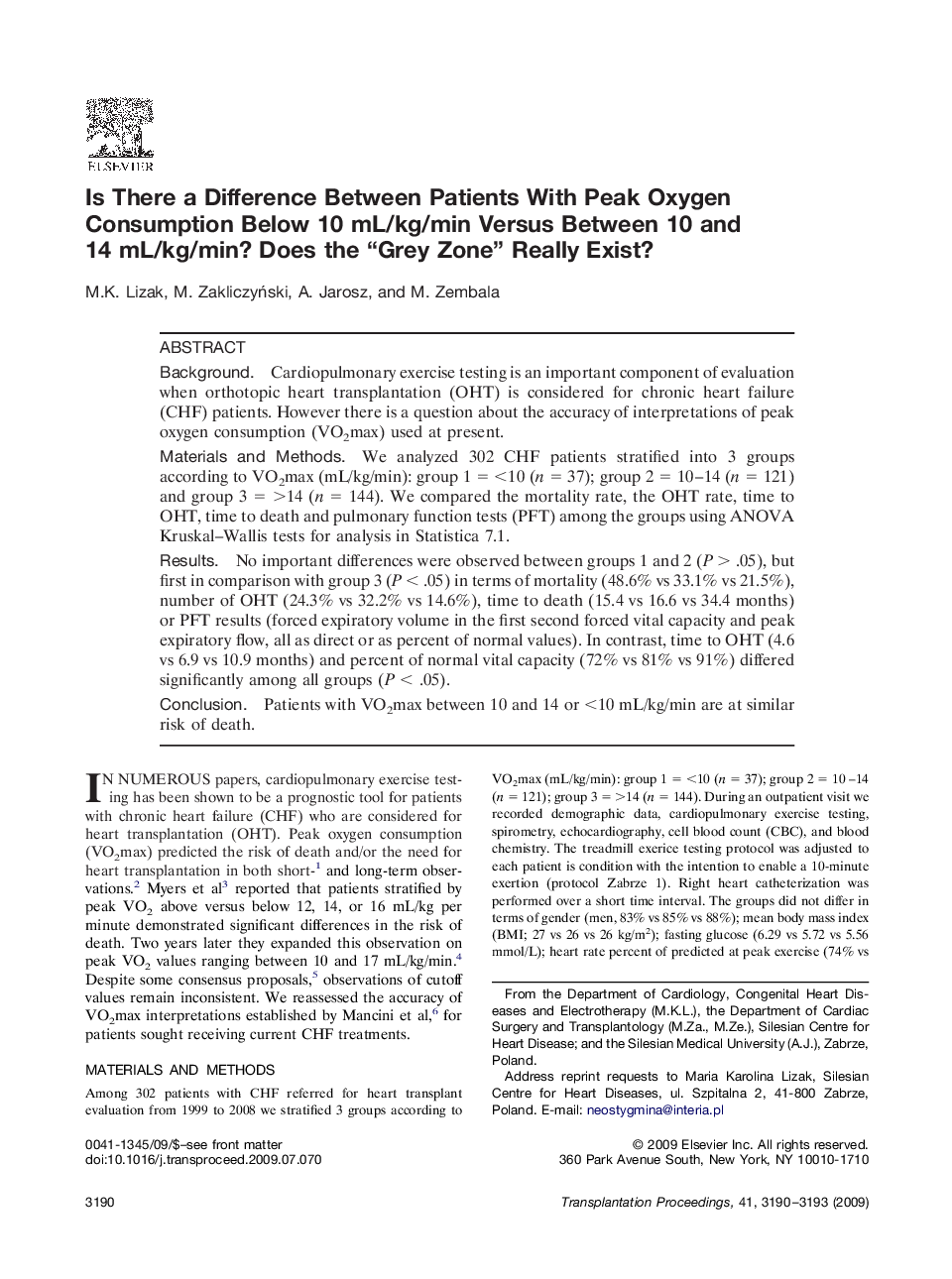| Article ID | Journal | Published Year | Pages | File Type |
|---|---|---|---|---|
| 4259019 | Transplantation Proceedings | 2009 | 4 Pages |
BackgroundCardiopulmonary exercise testing is an important component of evaluation when orthotopic heart transplantation (OHT) is considered for chronic heart failure (CHF) patients. However there is a question about the accuracy of interpretations of peak oxygen consumption (VO2max) used at present.Materials and MethodsWe analyzed 302 CHF patients stratified into 3 groups according to VO2max (mL/kg/min): group 1 = <10 (n = 37); group 2 = 10–14 (n = 121) and group 3 = >14 (n = 144). We compared the mortality rate, the OHT rate, time to OHT, time to death and pulmonary function tests (PFT) among the groups using ANOVA Kruskal–Wallis tests for analysis in Statistica 7.1.ResultsNo important differences were observed between groups 1 and 2 (P > .05), but first in comparison with group 3 (P < .05) in terms of mortality (48.6% vs 33.1% vs 21.5%), number of OHT (24.3% vs 32.2% vs 14.6%), time to death (15.4 vs 16.6 vs 34.4 months) or PFT results (forced expiratory volume in the first second forced vital capacity and peak expiratory flow, all as direct or as percent of normal values). In contrast, time to OHT (4.6 vs 6.9 vs 10.9 months) and percent of normal vital capacity (72% vs 81% vs 91%) differed significantly among all groups (P < .05).ConclusionPatients with VO2max between 10 and 14 or <10 mL/kg/min are at similar risk of death.
